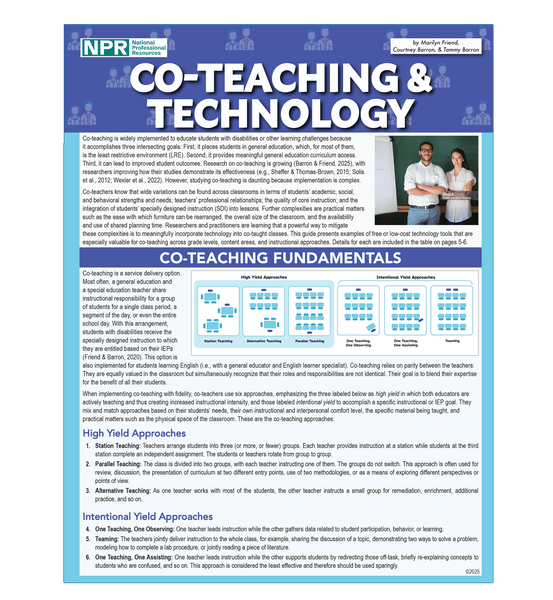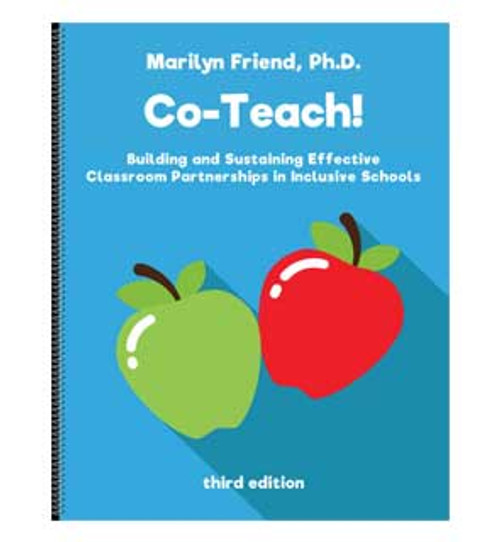Product Overview
Co-teaching is widely implemented to educate students with disabilities or other learning challenges because it places students in general education, which for many of them is the least restrictive environment (LRE), provides meaningful general education curriculum access, and can lead to improved student outcomes. Research on co-teaching demonstrates its effectiveness; however, studying co-teaching is daunting because implementation is complex, with wide variations across classrooms in terms of students’ academic, social, and behavioral strengths and needs, the challenge of integrating students’ specially designed instruction (SDI) into lessons, and practical matters such as the ease with which furniture can be rearranged, the overall size of the classroom, and the availability and use of shared planning time.
A powerful way to mitigate the complexities of co-teaching is to meaningfully incorporate technology into co-taught classes. This guide, by foremost co-teaching authority Marilyn Friend, with co-authors Courtney Barron and Tammy Barron, presents examples of free or low-cost technology tools that are especially valuable for co-teaching across grade levels, content areas, and instructional approaches.
Dr. Tammy Barron is an associate professor and program coordinator of the inclusive education program in the College of Education and Allied Professions at Western Carolina University in North Carolina. She also serves as special education administrator of the The Catamount School, a laboratory school operated by Western Carolina University in North Carolina. She earned her Ph.D. in specialized educational services with a concentration in educational leadership from The University of North Carolina at Greensboro in 2015. She has published articles and co-authored a book on specially designed instruction (SDI) in co-taught classrooms. Dr. Barron has co-taught in a variety of settings in preschool, elementary, secondary, and higher education in the areas of general and special education. Her research interests relate to collaboration and policies and organizational behaviors. She strives to improve outcomes for students through increasing understanding and advocating for the inclusive practices that support children, families, paraprofessionals, teachers, and administrators through collaboration.









